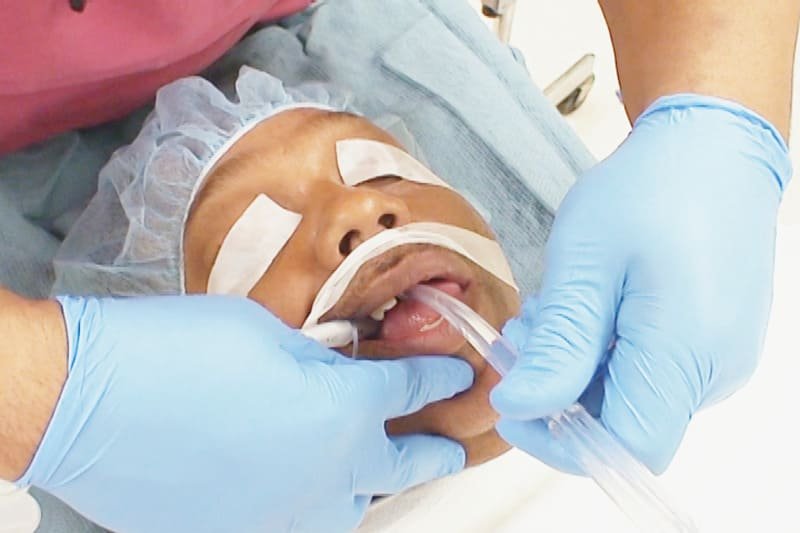Introduction
Endotracheal extubation is a critical phase in the continuum of patient care during anesthesia, marking the transition from a controlled and mechanically supported airway to the resumption of spontaneous breathing. This procedure involves the removal of the endotracheal tube, which can be associated with potential complications, such as the loss of the airway and the necessity for reintubation. Unlike intubation, which is often an urgent or emergent procedure, extubation is an elective process that should be meticulously planned and executed only when the patient’s physiologic, pharmacologic, and contextual conditions align optimally.
In this comprehensive review, we will delve into the intricacies of endotracheal extubation, emphasizing the pivotal role of risk stratification in ensuring patient safety and successful outcomes. Just as a well-thought-out strategy is essential when planning intubation, the initiation of extubation requires a specific and individualized plan, rooted in thorough risk assessment. This review will explore the various aspects of risk stratification for extubation and offer insights into tailored strategies for extubation based on the prediction of potential risks. By recognizing the importance of meticulous planning and considering patient-specific factors, healthcare professionals can navigate the complexities of extubation with confidence, minimizing adverse events and enhancing patient recovery.
Complications of Extubation
Extubation, while a routine procedure in anesthesia, can be associated with a range of complications, which can broadly be categorized into three main groups: physiologic effects of extubation, inability to tolerate extubation leading to the need for reintubation, and difficulties in re-establishing the airway. In this discussion, we will delve into each of these categories in detail, highlighting the underlying causes and associated risk factors.
1. Physiologic Effects of Extubation
Extubation during emergence from anesthesia can trigger various physiologic responses in patients. These responses can include:
- Arterial and Venous Hypertension: Sudden extubation may lead to increased blood pressure, potentially putting strain on the cardiovascular system.
- Tachycardia: Rapid heart rate can occur as a result of extubation, which may be due to factors such as airway stimulation or increased sympathetic activity.
- Coughing or Bucking: Patients may experience coughing or bucking upon extubation, which can lead to airway irritation and hemodynamic changes.
- Agitation: Some patients may become agitated following extubation, possibly due to the discomfort associated with the procedure.
These physiologic effects are generally transient and well-tolerated by most healthy patients. However, certain individuals with specific medical conditions, such as cardiac or cerebrovascular disease, preexisting raised intracranial or intraocular pressure, or those undergoing certain surgical procedures, may be at greater risk of experiencing serious consequences. For instance, patients undergoing neck surgery, neurosurgery, or certain plastic or ocular surgeries may be particularly vulnerable to these effects.
Table 1: Physiologic Effects of Extubation
| Physiologic Effect | Associated Consequences |
|---|---|
| Arterial and Venous Hypertension | Cardiovascular strain |
| Tachycardia | Increased heart rate |
| Coughing or Bucking | Airway irritation, hemodynamic changes |
| Agitation | Patient discomfort |
2. Inability to Tolerate Extubation
The inability to tolerate extubation can lead to the need for reintubation and can be attributed to several factors:
- Airway Obstruction: Inadequate airway patency can result from conditions such as macroglossia, laryngeal edema, laryngospasm, vocal cord paralysis, or tracheal obstruction. It may also be influenced by residual effects of analgesic or anesthetic medications.
- Inadequate Ventilation: Neuromuscular weakness due to preexisting diseases (e.g., chronic lung disease), residual neuromuscular blockade, or respiratory depression from opioids, sedatives, or anesthetics can hinder effective ventilation.
- Inadequate Oxygenation: Factors like atelectasis, reduced functional residual capacity, or increased oxygen consumption can compromise oxygenation during extubation.
- Inadequate Clearance of Secretions: Reduced level of consciousness, impaired cough reflex, increased respiratory secretions, or thickened secretions can hinder the clearance of respiratory secretions.
- Inability to Protect the Airway: Diminished neuromuscular strength or coordination, reduced level of consciousness, airway swelling, or impaired gastric emptying can result in the aspiration of gastric contents.
It is important to note that the timing of extubation can significantly influence these factors. For example, complications related to inadequate reversal of neuromuscular blockade or residual respiratory depression from medications can often be avoided with more precise timing of extubation.
Table 2: Causes of Inability to Tolerate Extubation
| Factor | Associated Causes |
|---|---|
| Airway Obstruction | Laryngeal edema, vocal cord paralysis, etc. |
| Inadequate Ventilation | Neuromuscular weakness, respiratory depression |
| Inadequate Oxygenation | Atelectasis, increased O2 consumption |
| Inadequate Clearance of Secretions | Impaired cough, increased secretions |
| Inability to Protect the Airway | Reduced neuromuscular strength, aspiration |
3. Difficulty Re-establishing the Airway
Re-establishing the airway during extubation can pose challenges related to anatomy, physiology, and context:
- Anatomic Challenges: Anatomical risk factors for difficulty with airway management may include a history of difficult initial intubation, poor laryngeal view, multiple intubation attempts, or advanced intubation techniques. Emergency reintubation may be complicated by factors such as airway trauma, swelling, or limited access due to changes since the initial intubation.
- Physiological Challenges: Patients undergoing emergency reintubation may present with physiological abnormalities, such as hypoxia, hypercapnia, acidosis, or hemodynamic instability, which can render them less tolerant of delays and prolonged intubation attempts.
- Contextual Challenges: The emergent nature of reintubation may lead to insufficient information, lack of necessary medication or equipment, inadequate access to the airway, or a shortage of qualified personnel. Additionally, human factors such as operator fatigue, stress, and urgency can impede a well-organized approach to airway management.
Table 3: Challenges in Re-establishing the Airway
| Challenge | Associated Factors and Causes |
|---|---|
| Anatomic Challenges | Difficult initial intubation, airway trauma, changes since initial intubation |
| Physiological Challenges | Hypoxia, hypercapnia, acidosis, instability |
| Contextual Challenges | Insufficient information, lack of resources, human factors |
In conclusion, understanding the complications associated with extubation is crucial for healthcare professionals involved in anesthesia care. Proper risk assessment, patient-specific considerations, and meticulous planning are essential to minimize these complications and ensure safe extubation practices. Successful extubation

